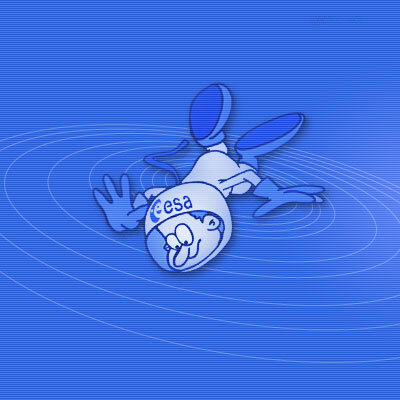Education

ARISS
Amateur Radio on the International Space Station
The objectives of this activity are to provide a live radio link from the ISS to selected children from Dutch and Belgian schools, to allow them to have the experience of interacting with someone in orbit around the Earth. Students will prepare and put questions to ESA astronaut André Kuipers.
The schools selected are the winners of the ‘Zeg Het ISS’ competition, which invites schoolchildren to either create a picture of an astronaut in the ISS or write a story about an astronaut in the ISS depending on their age.
Winning classes will be invited to Space Expo, Noordwijk, the Netherlands and assist in the live radio contact with the International Space Station via radio equipment at ESA/ESTEC in Noordwijk, The Netherlands. The radio contact will be provided by ARISS, Amateur Radio on the ISS, an international working group of volunteering amateur radio operators. The radio contact will be established during a pass of the space station over Netherlands
A selected number of children will put their questions in the presence of many other schoolchildren with parents and authorities in attendance.

BugNRG
Study of output of bacterial fuel cells in weightlessness
The Bug-NRG experiment will study how weightlessness has an influence on the efficiency of bacterial fuel cells. The aim is to acquire precise data on the output of these fuel cells in space.
Some bacteria are capable, in the right circumstances, of converting carbohydrates into electrons and carbon dioxide. This process can be used as a source of energy in these so-called bacterial fuel cells. When placed inside a two-chamber fuel cell, these bacteria can produce an electrical current. The output of this cell can be measured and recorded to study the properties of the fuel cells.
Two bacterial fuel cells will be flown. The voltage and current of these cells will be measured along with the temperature.
GraPhoBox
Study into interaction of effect of light and gravity on the growth processes of plants
On Earth two major stimuli, which affect plant growth, are light and gravity. With respect to light, shoots grow towards light. This is called phototropism. Root growth direction however is affected by gravity. This is called gravitotropism.
This experiment will assess the effect of phototropism and gravitropism on plants and to observe if there is a link between the two.
Seeds from a variety of mustard plant common in genetic research will be studied. These seeds will be germinated in low intensity light and without light both on the ground under Earth’s gravity and under weightlessness on the ISS.
The seeds that are used are a normal wild-type strain of the mustard plant, a strain of the plant where the shoots show no ability to grow towards light, a strain where the roots show no ability to react to gravity, and a final strain that shows no ability to react to both light and gravity.
The seeds will be germinated on a nutrient-rich surface in a growth box with a light and dark growth chamber. The experiment is started by raising the temperature from 4 degrees Celsius to room temperature. After ten days photos will be made from the seedlings roots and shoots. The results obtained from the plants in space will be compared to the plants grown on Earth and between the different strains.

SEEDS
"Seeds in Space"
The main goal of this student experiment is to involve as many students as possible in an activity that shows that science is fun. The educational objectives of the experiment are:
To demonstrate the influence of gravity on the germination and growth of plants to young people (10–15 year olds) and others.
- By engaging in the comparable on-ground experiment, students will experience that science is fun and that the weightless environment of space opens new possibilities.
The experiment kits will be distributed up to one month before launch to schools or other distribution channels.

VIDEO-3
Educational demonstration of human physiology
The main scientific objectives of this experiment are to demonstrate some of the effects of weightlessness on the human body (e.g. blood pressure and circulation, fluid shift, orientation awareness, etc.) by means of filming (with voice-over) four basic physiology experiments under weightless conditions on board the ISS.
For all four experiments comparable on-ground experiments will be performed in order to familiarise students with the differences between the Earth and space environments.
In addition, a sequence of the related CIRCA and SUIT experiments (refer to the CIRCA and SUIT fact sheets) will be filmed. This will help familiarise students with the actual scientific and technological hardware currently being used on board the ISS to measure blood pressure and orientation awareness respectively.
The footage taken of both the ‘on-ground’ and ‘in space’ experiments will be used to develop educational material (a DVD) fitting the basic European science curriculum of the target 12-18 year old age group. The DVD will be distributed to secondary schools in the Member States of the European Space Agency.

